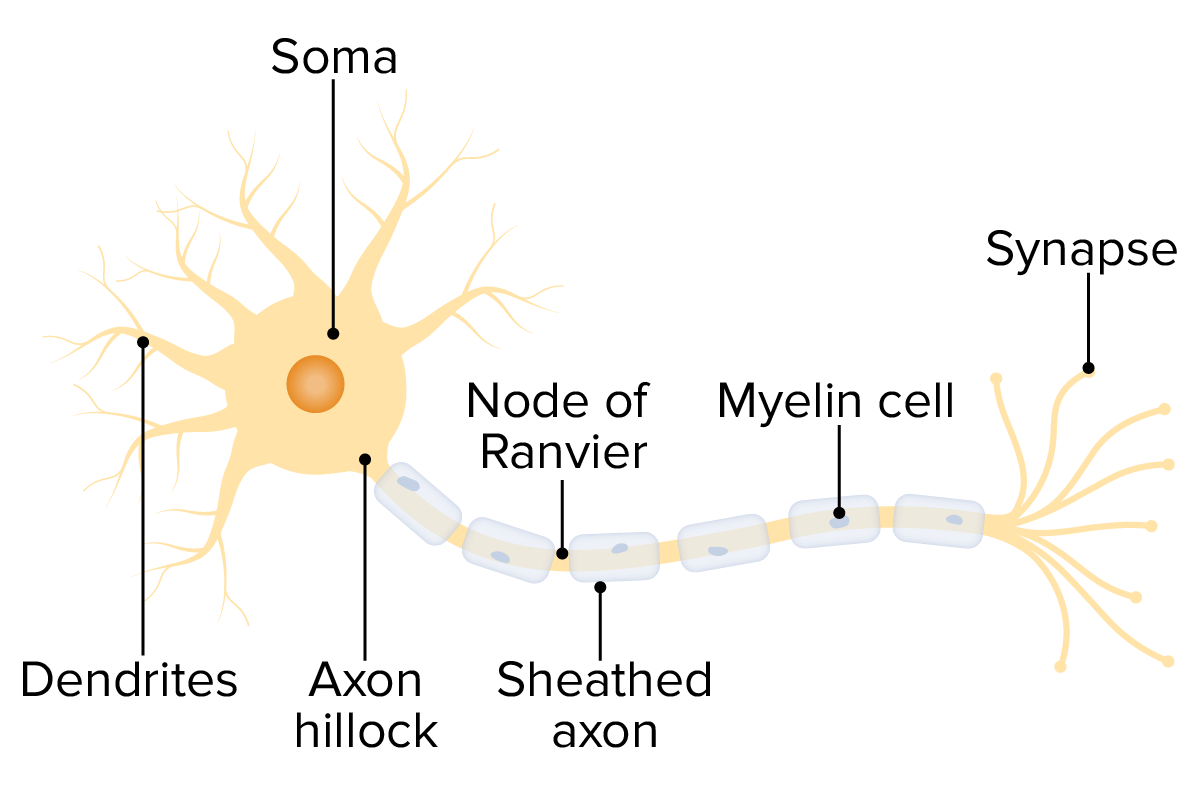Playlist
Show Playlist
Hide Playlist
Case: 45-year-old with Diabetes Mellitus
-
Slides Acute Inflammatory Demyelinating Polyneuropathy.pdf
-
Download Lecture Overview
00:01 Now, let's talk about acute inflammatory demyelinating polyneuropathy. 00:07 Let's begin with a case. 00:09 This is a 45-year-old man with diabetes who presents with a two day history of weakness in the legs. 00:14 He reports a history of gastrointestinal illness about two weeks ago, that resolves spontaneously. 00:21 Two days ago, he began to notice heaviness in his feet, that has now spread to both legs and hands. 00:27 He has difficulty walking at home, even short distances, and he reports difficulty opening a jar this morning. 00:34 He reports mild paraesthesia in his legs bilaterally. 00:38 And his exam shows four out of five strength symmetrically in both legs, and four out of five grip in wrist extension strength. 00:45 Since your exam shows mildly reduced light touch in his legs to the mid calf, and he is diffusely a reflexive. 00:52 So what's your diagnosis? Well, there's a number of features of this case that I want you to key in on. 00:57 First is the distribution. 00:59 This is a symmetric and the length dependent ascending process. 01:03 It began in both legs, it spread up the legs and now is involving the hands. 01:08 And that distribution is consistent with a peripheral nerve disorder. 01:12 The second is the sensory exam. 01:14 There is sensory involvement, but it's relatively mild. 01:18 And it's much less and out of proportion than what we're seeing with the strength exam. 01:23 The third is the reflexes. 01:25 This patient is diffusely a reflexive and that points us to a peripheral nerve disorder. 01:30 And then the last key feature are two wild cards. 01:33 The first is that this is a rapid onset condition that has begun in an early subacute time course. 01:41 Symptoms began only days ago and have rapidly worsened. 01:44 And the second is this recent gastrointestinal illness, which is classic for this condition. 01:50 So what's the diagnosis? Is this HIV-associated polyneuropathy, acute inflammatory demyelinating polyneuropathy, diabetic polyneuropathy, or mononeuritis multiplex? Well, this doesn't sound like HIV associated polyneuropathy. 02:06 That's a chronic length-dependent peripheral polyneuropathy. 02:09 So it is length dependent. 02:10 It an progress up the lower extremity to the upper extremity, but this is a chronic onset condition. 02:17 Our patient is presenting with a severe acute and rapidly worsening process. 02:22 The patient also doesn't have other history to suggest this, but workup may be needed in selected cases. 02:28 This doesn't sound like diabetic polyneuropathy. 02:31 Again, that's a chronic onset length dependent process. 02:34 And that's not the time course for this illness. 02:36 Areflexia is also an often very uncommon in diabetic polyneuropathy. 02:41 This is not a mononeuritis multiplex. 02:44 Mononeuritis multiplex is multiple mononeuropathies. 02:47 So it's carpal tunnel syndrome and ulnar neuropathy or a peroneal neuropathy and a carpal tunnel. 02:53 And that's not what we have here. 02:54 Our patient is presenting with a diffuse symmetric polyneuropathy And this is a classic or typical presentation of someone with Guillain-Barré. 03:03 There's an antecedent GI illness now associated with a rapidly progressive ascending polyradiculoneuropathy with areflexia.
About the Lecture
The lecture Case: 45-year-old with Diabetes Mellitus by Roy Strowd, MD is from the course Acute Inflammatory Demyelinating Polyneuropathy (AIDP).
Included Quiz Questions
Acute onset of symptoms is most likely associated with which of the following?
- Guillain-Barré syndrome
- Diabetic polyneuropathy
- HIV-associated polyneuropathy
- Mononeuritis multiplex
- Alcohol-induced polyneuropathy
Which of the following would most likely be found in a patient with acute inflammatory demyelinating polyneuropathy?
- A recent Campylobacter infection
- A history of diabetes mellitus
- A history of alcoholism
- A history of weakness in the morning that gets better throughout the day
- A family history of Duchenne muscular dystrophy
Customer reviews
5,0 of 5 stars
| 5 Stars |
|
5 |
| 4 Stars |
|
0 |
| 3 Stars |
|
0 |
| 2 Stars |
|
0 |
| 1 Star |
|
0 |




